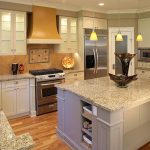Home security shouldn’t feel like a maze. Yet with brands, bundles, and buzzwords flying around, it’s easy to stall. So, let’s simplify. We’ll strip the fluff, translate the tech, and build a short list that fits your lifestyle, not the other way around. And because you asked the big question — What is the best security alarm system for home? — We’ll answer it clearly, then show you how to get there step by step.
As you read, you’ll notice this guide is built for action. We’ll match systems to common living situations, reveal the features that actually stop problems, and show you exactly where trade-offs hide. Moreover, we’ll keep the structure tight, the language plain, and the decisions obvious.
What Is the Best Security Alarm System for Home?
Short answer: There is no universal winner. Instead, the “best” system is the one that fits your risks, budget, and tolerance for setup and monthly fees. If you rent, a wire-free DIY kit with cellular backup and smart alerts is usually ideal.
However, if you own a larger home or travel frequently, professionally monitored systems provide quicker incident response, wider device compatibility, and insurance-friendly documentation. Meanwhile, hybrid setups (DIY gear plus optional professional monitoring) offer you flexibility: start with self-monitoring and upgrade during travel or high-risk seasons.
Fast Matches for Every Home Style
- Small Apartment: Wireless kit with a base station, entry sensor on the main door, one hallway motion sensor, a smart lock, and a compact indoor cam. Optional self-monitoring keeps costs low while still providing useful alerts.
- Townhome with Pets: It has pet-immune motion sensors, a video doorbell with package detection, one outdoor cam for the parking area, and an app-controlled siren to scare off prowlers without waking the whole block.
- Single-Family Home: This home has a pro-monitored system with cellular backup, glass-break detection for open-plan areas, two outdoor cams with human detection, and smoke/CO coverage for life safety.
- Frequent Traveler: 24/7 professional monitoring, redundant communications (cell + Wi-Fi), automations that cycle lights for presence, and video verification for faster response.
- Elder Care Suite: Wellness sensors (bed/chair presence, door opens), a panic pendant, an indoor cam with a privacy shutter, and caregiver notifications that escalate only when needed.
- Remote Property: Solar-ready outdoor cameras, a gate sensor, a long-range Wi-Fi bridge, and temperature/water sensors to catch freezes or leaks before they become disasters.
Must-Have Security Essentials
Start with the essentials and layer intelligently. A modern alarm revolves around a base station (or hub), which ties your sensors, sirens, and connectivity together. Then, build outward. Perimeter sensors — door and window contacts — deter and document entry attempts; place them on every ground-level entry and balcony doors. For interior detection, position motion sensors on natural chokepoints such as hallways and stair landings. In large open spaces, add glass-break sensors so a single device can listen across a living/dining area and kitchen.
Life safety is non-negotiable. Install smoke and carbon monoxide detectors on every sleeping floor and near the kitchen. Place water leak sensors at sinks, the water heater, the laundry area, and anywhere a slow leak could damage your floors. Use cameras for verification rather than for surveillance spectacle: employ a video doorbell for packages and visitors, an outdoor camera to monitor driveways or side gates, and only one indoor camera where it’s crucial to confirm alarms or check on kids and caregivers.
Enable activity zones and privacy schedules so cameras focus on what matters and stay quiet when you’re home. Finally, add at least one keypad, a few key fobs or PINs for guests, and a loud interior siren. Where permitted, an exterior siren/strobe provides “caught-in-the-act” pressure that makes intruders run.
Smarter Features That Actually Matter
Smart features should save time, reduce false alarms, and speed help. Consequently, prioritize reliable alerts: fast push notifications that include a thumbnail or short clip so you can decide instantly whether to act. Add SMS or voice call fallbacks for critical events. Build redundant links by combining Wi-Fi and cellular backup; if you live rurally, test that carrier signal before you buy. Automations that matter include arming when you leave, disarming on arrival, locking doors when the system arms, and turning on exterior lights when a person approaches. Additionally, give each family member the right level of access — kids can have a simple PIN, while contractors get one-time or time-boxed codes. And because privacy is part of security, set camera privacy schedules so indoor cameras switch off or shutter when you’re home.
What Your Security Really Costs Over Time
Budgeting isn’t just about sticker price. Therefore, consider the total cost of ownership (TCO) over three to five years. Hardware includes the hub, sensors, cameras, locks, and sirens; bundles can save 10–25% versus à la carte. Monitoring spans free self-monitoring to professional services with video verification and emergency dispatch.
Connectivity such as cellular backup may add a monthly line item, though some plans bundle it. Installation can be DIY (free but time-intensive) or professional (more expensive but faster and cleaner). Maintenance costs are minor but real — expect occasional batteries, adhesives, and the odd sensor replacement.
People often ask from a budget angle, What is the best security alarm system for home? The true bargain is the one that prevents expensive incidents. Fires and leaks routinely cost more than burglary losses, which is why smoke/CO and water sensors punch far above their weight. Consequently, prioritize life-safety and resilience before extra cameras or flashy gadgets.
DIY vs Professional Monitoring: Which Fits You Best?
Here’s a quick comparison to frame the trade-offs you’ll actually feel:
| Model | Who it fits | Strengths | Watch-outs |
| DIY | Renters, budget-focused buyers, tinkerers | Lower upfront cost, flexible, no long-term contracts | You handle setup, false alarms, and most troubleshooting |
| Monitored | Homeowners, frequent travelers, and larger homes | 24/7 response, video verification, expert support | Monthly fees, sometimes contracts, are less “hackable” |
| Hybrid | Most households over time | Start DIY; add pro monitoring during vacations or high-risk seasons | Feature mismatch if you mix too many brands |
Step-by-Step: How to Install Without the Headache
Although installation can look daunting, it’s mostly about thoughtful placement and testing—first, map risks: doors, ground-floor windows, hallway chokepoints, and any blind corners outside. Place the hub centrally, away from obvious entry points, with strong Wi-Fi and a clear cellular signal. Pair sensors starting with the main door and a central motion; afterward, add glass-break, leak, smoke, and CO coverage to fill gaps. Mount cameras to frame approaches and packages first, and only then add interior views if you need verification. Finally, run scenarios: Arm Away, Arm Home, entry delay, panic button, smoke/CO tests, and a simulated power or internet outage. Confirm that every alert path reaches the right people.
Stacking Layers for Rock-Solid Protection
Alarms help most when they’re part of a broader defensive posture. Thus, stack simple wins: add yard/window decals, pair a loud exterior siren with motion-activated lighting, set smart locks to auto-lock with unique PINs per person, trim shrubs near windows, secure ladders and tools, leave delivery instructions or use a package box, and — where comfortable — join neighborhood apps or share camera zones with trusted neighbors.
Protecting Your Home Without Sacrificing Privacy
Security should never trade away your privacy. Hence, look for end-to-end encrypted video, strong account security, and options for local or encrypted cloud storage. Separate admin and user profiles; issue temporary access codes for sitters and contractors; and enable audit logs where supported. Choose systems that let you auto-delete clips, mute microphones, and schedule camera privacy hours. Moreover, prefer monitoring centers that support video verification without indefinite retention, and read data policies before you subscribe.
Urban, Suburban, or Rural? Tailor Your System to Your Space
Context matters. Therefore, in urban areas, prioritize a doorbell camera with strong package and person detection, quick notifications, and clear two-way audio, while considering shared entrances and HOA rules. In suburban settings, add perimeter cameras, glass-break coverage for open floor plans, and leak sensors for basements and laundry rooms. Rural homes benefit from cellular backup, long-range Wi-Fi bridges, and rugged outdoor cameras with larger batteries or solar panels. For rentals and short-term stays, prefer peel-and-stick gear, guest codes that auto-expire, and camera placements that respect privacy laws and platform rules.
Choosing Tech That Won’t Be Obsolete in 2 Years
You don’t need everything now, but you do need room to grow. So, choose ecosystems that support 100+ devices without choking, offer robust interoperability (Matter, Thread, Z-Wave, Zigbee, or strong cloud APIs), provide security and feature updates for at least five years, and let you add professionalmonitoring on demand during travel or high-risk periods. Additionally, confirm that firmware updates happen automatically and that you can export clips and logs if you ever switch platforms.
The Ultimate Pre-Buy Checklist
- Map your home’s entries, hallways, and blind spots
- Decide DIY, monitored, or hybrid (and why)
- Require cellular backup and power-outage resilience
- Add smoke/CO and leak sensors early
- Prefer cameras with privacy shutters and activity zones
- Demand app accounts with roles and audit logs
- Plan for at least one exterior siren and motion lighting
- Set a 3–5-year TCO budget, not just the upfront cost
- Verify warranty length and update policy
- Test support responsiveness before you commit
Quick Answers to Common Security Questions
Does a loud siren really matter?
Yes. Because intruders hate attention, a 100+ dB siren plus an exterior strobe notably increases the chance they bolt early.
Can I avoid false alarms with pets?
Absolutely. Use pet-immune motion sensors rated for your pets’ weight, and aim them to look above typical pet height.
Do I need cameras indoors?
Sometimes. If you want video verification or to check on kids and caregivers, add one indoor cam with a privacy shutter and clear rules.
How do I make alerts useful?
Keep only actionable ones: person detected, door forced, glass-break heard, leak found, smoke/CO triggered. Mute the rest.
Is self-monitoring enough?
It can be for smaller spaces or when you’re often home. Yet if you travel, professional monitoring with video verification is a force multiplier.
Along the way, you’ll see the big question pop up again: What is the best security alarm system for home? The best answer is still “the one tuned to your risks and routines,” backed by reliable connectivity and alerts you’ll actually act on.
Security Setups That Match Real Lives
New Parents: Pair a doorbell cam with person detection, an indoor cam in the nursery (privacy schedules on), and smoke/CO sensors on every sleeping floor. Consequently, you’ll receive meaningful alerts without constant pings, and you can check in during nap time without waking anyone.
Pet Household: Combine pet-immune motion with an outdoor cam aimed at the yard, and add a smart lock so dog-walkers get timed codes. Moreover, automate lights at dusk to reduce nighttime trips and set a routine that pauses interior cameras while you’re home.
Work-From-Home: You’re already there, but packages pile up. Therefore, lean on doorbell video, a lock that lets couriers use a vestibule, and a leak sensor near the water heater. Meanwhile, keep interior cameras off by default and rely on contact sensors for quiet security.
Frequent Flyer: Build a hybrid system with always-on pro monitoring, an indoor cam with a privacy shutter, and robust cellular backup. Additionally, set presence automations so lights and shades move while you’re away, and schedule a weekly system test while you’re on the road.
Aging in Place: Use wellness sensors, a fall-friendly panic pendant, and cameras limited to common areas. In addition, share access with family and build a response plan that includes neighbors, caregivers, and the monitoring center.
Top Features Ranked by Impact
Because not all features are equal, rank them before you shop:
- Life safety first: Smoke/CO and leaks. Fires and floods cost more than theft and create bigger risks.
- Entry detection: Door, window, and garage sensors. Fast, reliable, and low-maintenance.
- Verification: Video or audio that proves an event is real reduces response time and false fines.
- Resilience: Cellular backup, battery backup, and local automations keep you safe during outages.
- Privacy: Shutters, local storage, and clear data controls keep tech from overreaching.
- Convenience: Keypad, fobs, guest codes, and scenes you’ll actually use.
Pro Hacks to Fine-Tune Your System
Name zones clearly so alerts are meaningful at a glance — for example, “Kitchen Window East.” Create a couple of routine scenes: a Goodnight scene that arms “stay,” locks doors, and shuts lights, and an Away scene that arms “away,” locks up, and lowers the thermostat. Then, tune motion sensitivity to reduce pet triggers and refine activity zones to ignore streets and sidewalks. Seasonally, add pro monitoring only during travel months; in storm season, test backups and batteries. Finally, replace batteries on a schedule and keep a small stash and extra adhesive strips so maintenance takes minutes, not hours.
Common Pitfalls That Weaken Your Security
Having more lenses doesn’t mean more safety, so use fewer cameras but ensure they have better angles and lighting. Never skip life-safety sensors; alarms are for more than just intruders. Also, don’t overlook upstream bandwidth — HD video needs a reliable upload speed, and you should test Wi-Fi where cameras will be placed. Avoid mixing too many brands because features can differ and reliability may decrease. Most importantly, don’t “set and forget.” Run drills quarterly so family and guests know the plan and can act confidently.
Surprising Perks Most People Overlook
Warranties and support policies often decide whether a system still feels “best” a year later. Consequently, read the fine print: some vendors replace sensors instantly, while others require lengthy diagnostics. Meanwhile, insurance discounts can offset monitoring fees; ask your provider whether monitored burglary, smoke, and water sensors qualify for a premium reduction. In addition, consider trial periods, return windows, and no-penalty plan changes. Those terms matter because they let you start small, learn quickly, and adjust without being trapped in the wrong contract.
The Honest, Balanced Take on “Best” Systems
By now, the pattern is clear. The right system is the one that you’ll maintain, that survives outages, and that delivers verifiable alerts. If you still wonder — What is the best security alarm system for home? — Use this rule of thumb. In a studio or 1-bed rental, a DIY kit with cellular backup, doorbell video, and smoke/CO coverage is the best value. In a 3- to 4-bed home, choose a hybrid or monitored system with video verification, an exterior siren, and leak coverage. For travel-heavy or remote owners, pro monitoring with redundant links and scheduled automations beats everything else, because response times and escalation paths truly matter when you’re away.
A Ready-to-Go Starter Bundle You Can Copy
Want a concrete starting bundle you can price anywhere? Try this: a hub with Wi-Fi plus cellular backup; one keypad and two key fobs; six door/window sensors and one glass-break; two pet-immune motion sensors; one video doorbell and two outdoor cameras; smoke/CO combos on each sleeping floor; two leak sensors for the kitchen sink and water heater; and both an interior and an exterior siren with a strobe. This mix covers most two- to three-bed homes well. Afterward, add smart locks, additional leak sensors, or a garage tilt sensor as your needs evolve.
The Last Piece of Advice Before You Decide
Choosing “the best” isn’t about chasing the newest gadget; it’s about aligning real risks with reliable responses. Therefore, take the map you made, price the two-minute bundle, and decide where professional monitoring adds value for your lifestyle. Finally, yes — What is the best security alarm system for home? — The honest answer is the one that covers life safety first, verifies incidents fast, and respects your privacy every single day.

















Leave a comment